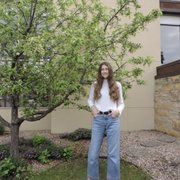Tom B.
Yelp
This is to review the University of Wisconsin - Madison. I chose to work at U.W. - Madison because my undergrad and graduate degrees from U.C. Berkeley concerned vitamin research. As an undergrad, I did lab research on vitamin B6, and for my Ph.D., I did lab research on folic acid and vitamin B12. And so, it was a no-brainer that I should do my post-doctoral work at U.W. - Madison. U.W. - Madison is renowned for many of the early discoveries in the field of vitamin research, for example, for its introduction of the rat as the animal of choice for performing research on vitamins, amino acid metabolism, protein requirements, and so on. It was at U.W. - Madison, that the vitamins were first classified as being, "fat-soluble A" and "water-soluble B." At Madison, all of my work concerned vitamin K. Prof. H. DeLuca, and his laboratory staff at U.W. -- Madison are renowned for their work on vitamin D and vitamin A.
SCIENTIFIC AND ARTISTIC ENVIRONMENT. U.W.--Madison is home to 20 Nobel Prize winners and 33 winners of the Pulitzer Prize. The Nobel Prize winners include, Joshua Lederberg (1958, Medicine), Har Gobind Khorana (1968, Medicine), Howard Temin (1975, Medicine), and John Van Vleck (1977, Physics), William C. Campbell, (2015 Medicine), Oliver Smithies (2007 Medicine). During my 4 years of residence and employment in Madison, the Madison Museum of Contemporary Art was my connection to the world of art and, in particular to the group of Chicago-based artists known as The Chicago Imagists. An exhibit of Richard Lostutter's paintings at this museum inspired me to drive to Chicago, and view paintings by the Chicago Imagists, including paintings by Ed Paschke, Roger Brown, and Sarah Canright.
SOCIAL ENVIRONMENT. The social environment at U.W. -- Madison is provided by the many Mini-Courses that are taught at the two student unions (Union South and Memorial Union). Four of the people in my laboratory were members of a clogging group, The Kickapoo Cloggers, and they suggested that I learn. And so, I took courses in clogging, tap dancing, jazz exercise, and ballroom dancing, all of these being taught in Union South. When I arrived in Madison, I was a total nerd and had no skill in dancing. But after two years of training, I was good enough to perform, and I performed with my group in front of audiences numbering from about 100 to about 500, and these included performances at State Capitol building (see, attached photo of me performing, YOU NEED TO CLICK ON THIS PHOTO TO SEE ALL OF IT), and at bluegrass festivals in Edgerton, WI, Amherst, WI, Edgerton, WI, Ashland, WI, Mount Horeb, WI, Verona, WI, Kahoka, MO, Delevan, WI, and Rockford, IL. Football games are a big deal at Univ. Wisconsin -- Madison. Please see my photograph of the marching band carrying sousaphones. The marching band plays at every football game.
CULTURAL AND AGRICULTURAL ENVIRONMENT. Wisconsin was settled by immigrants arriving from German and Norway. The Memorial Union has a Stiftskeller where the walls bear murals having a German theme (see, the photo of me in the Stiftskeller, and a close-up photo of one of the murals). Regarding Norwegians, Sytende Mai (independence day) is a holiday that is celebrated in some towns in Wisconsin, for example, by an annual parade in Stoughton, WI. The nearby town of Mount Horeb is a center for Norwegian culture. Madison, Roxbury, Milwaukee, and other towns are distinguished by their German restaurants. In addition, every year a few farms in the Madison area feature, DAY ON THE FARM, where any person can visit a farm and see displays relating to crop harvesting, veterinary science, or cheese-making.


















